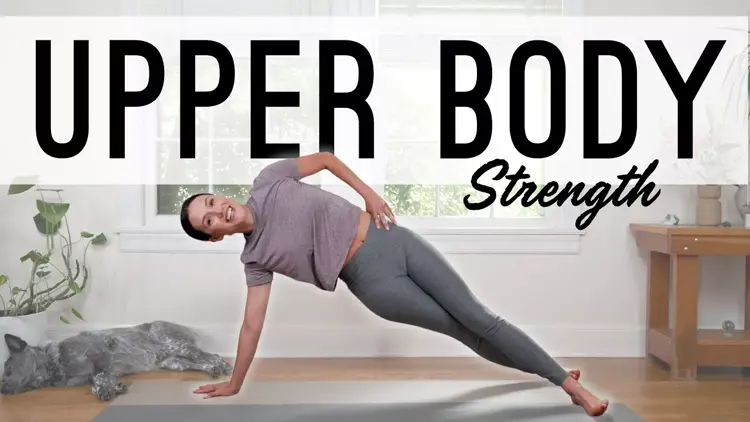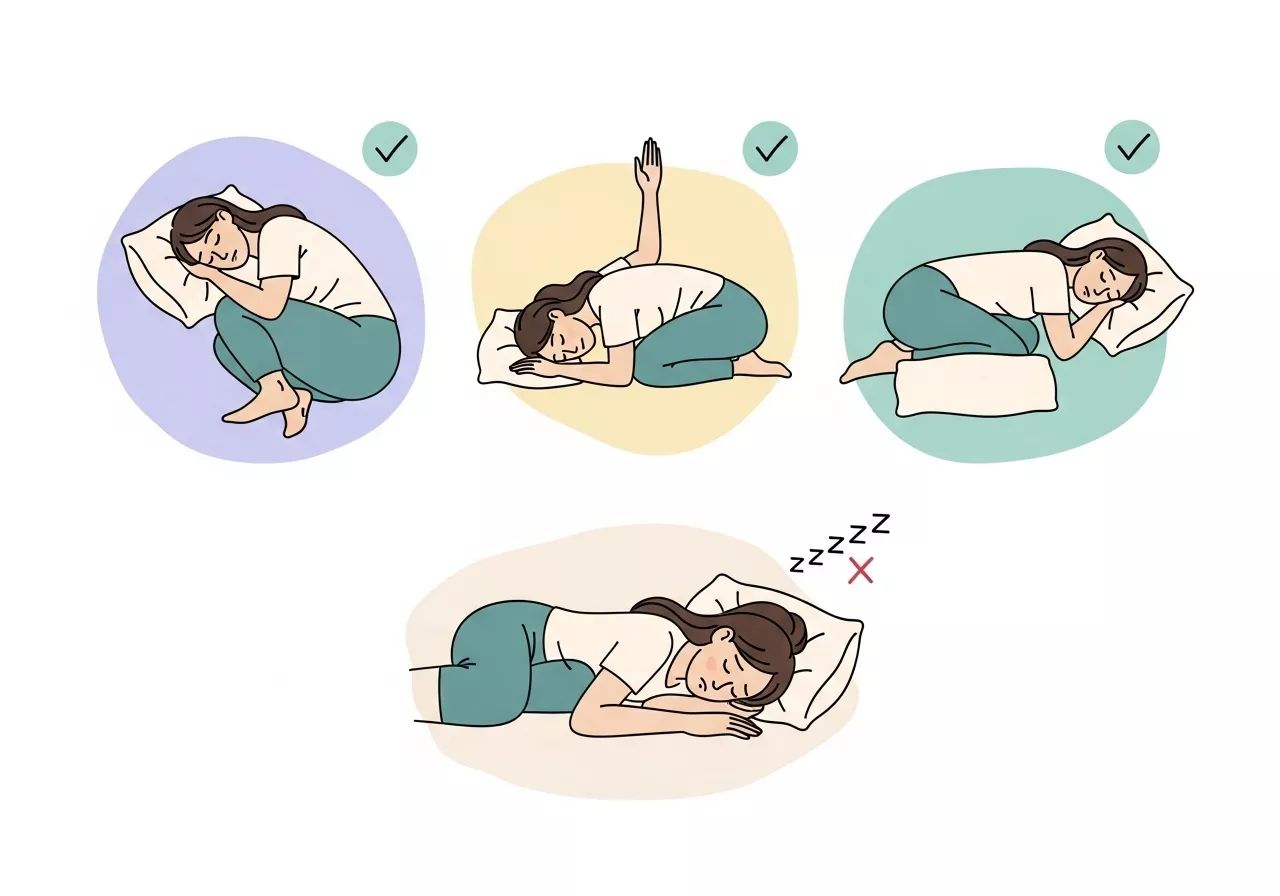Yoga is not only a practice for flexibility and mindfulness but also an excellent way to build strength, particularly in the upper body.
Unlike traditional strength training with weights, yoga uses your body weight to create resistance, helping you develop strong and toned muscles while improving balance and flexibility.

Here’s an in-depth look at how yoga can enhance upper body strength and the best poses to include in your practice.
Benefits of Building Upper Body Strength Through Yoga
1. Improves Functional Strength:
- Strengthening your upper body through yoga enhances functional fitness, making everyday tasks like lifting, carrying, and pushing easier.
2. Increases Muscle Endurance:
- Yoga poses require holding positions for extended periods, building endurance in muscles like the shoulders, arms, chest, and back.
3. Enhances Postural Support:
- Strong upper body muscles support better posture, reducing strain on the spine and preventing back and neck pain.
4. Improves Joint Stability:
- Yoga strengthens stabilizing muscles around the shoulders and wrists, reducing the risk of injury.
5. Integrates Core Engagement:
- Many upper body-focused yoga poses also engage the core, promoting overall strength and balance.
Key Yoga Poses for Upper Body Strength
1. Plank Pose (Phalakasana)
Plank Pose is a foundational yoga posture that engages multiple muscle groups, making it a great starting point for building upper body strength.

How to Do It:
- Start in a tabletop position with hands directly under shoulders.
- Extend your legs back, balancing on your toes and keeping your body in a straight line.
- Engage your core and hold the pose for 20–60 seconds.
Muscles Worked:
- Shoulders, arms, chest, and core.
Tips:
- Avoid sagging or lifting your hips too high. Keep your neck neutral by looking slightly ahead.
2. Chaturanga Dandasana (Four-Limbed Staff Pose)
This pose strengthens the triceps, chest, and shoulders while preparing you for more advanced arm balances.

How to Do It:
- Begin in Plank Pose.
- Lower your body halfway down, keeping your elbows close to your sides and forming a 90-degree angle.
- Keep your body parallel to the ground and hold briefly before transitioning to Upward-Facing Dog or returning to Plank.
Muscles Worked:
- Triceps, shoulders, chest, and core.
Tips:
- Maintain a straight line from head to heels and avoid collapsing your lower back.
3. Downward-Facing Dog (Adho Mukha Svanasana)
A versatile pose, Downward-Facing Dog strengthens the shoulders and upper back while stretching the hamstrings and calves.

How to Do It:
- Start in a tabletop position, tuck your toes, and lift your hips towards the ceiling.
- Straighten your arms and legs, forming an inverted “V” shape.
- Press your hands firmly into the mat and distribute your weight evenly.
Muscles Worked:
- Shoulders, arms, upper back, and core.
Tips:
- Keep your heels moving towards the ground, but focus on lengthening your spine rather than forcing your heels down.
4. Dolphin Pose (Ardha Pincha Mayurasana)
This pose is a shoulder and arm strengthener that prepares you for inversions like Headstand.

How to Do It:
- Start in a tabletop position, lower your forearms to the mat, and interlace your fingers if needed.
- Tuck your toes and lift your hips, similar to Downward-Facing Dog but on your forearms.
- Hold for 20–60 seconds.
Muscles Worked:
- Shoulders, arms, upper back, and core.
Tips:
- Keep your shoulders away from your ears and press evenly through your forearms.
5. Side Plank (Vasisthasana)
This balancing pose targets the shoulders and arms while engaging the obliques and core.

How to Do It:
- Begin in Plank Pose.
- Shift your weight onto your right hand and the outer edge of your right foot.
- Stack your left foot on top of the right and extend your left arm towards the ceiling.
- Hold for 20–30 seconds, then switch sides.
Muscles Worked:
- Shoulders, arms, obliques, and core.
Tips:
- Keep your hips lifted and avoid collapsing into your supporting shoulder.
6. Upward-Facing Dog (Urdhva Mukha Svanasana)
This backbend strengthens the chest, shoulders, and arms while opening the chest and stretching the spine.

How to Do It:
- Lie face down with your hands under your shoulders.
- Press into your hands to lift your chest and straighten your arms.
- Keep your thighs lifted off the mat and your shoulders away from your ears.
Muscles Worked:
- Shoulders, chest, arms, and upper back.
Tips:
- Engage your legs and avoid locking your elbows.
7. Crow Pose (Bakasana)
Crow Pose is an arm balance that builds strength in the wrists, arms, and shoulders while improving focus and balance.

How to Do It:
- Start in a squat with your hands shoulder-width apart on the mat.
- Lift your hips, place your knees on your upper arms, and lean forward.
- Gradually lift one foot, then the other, balancing on your hands.
Muscles Worked:
- Arms, shoulders, and core.
Tips:
- Keep your gaze forward to maintain balance and avoid tipping forward.
8. Reverse Plank (Purvottanasana)
This pose strengthens the arms, shoulders, and wrists while stretching the chest and hip flexors.

How to Do It:
- Sit with your legs extended and hands behind you, fingers pointing forward.
- Press into your hands and heels to lift your hips, forming a straight line from head to heels.
- Hold for 20–30 seconds.
Muscles Worked:
- Shoulders, arms, wrists, and back.
Tips:
- Engage your core to prevent sagging hips.
Tips for Building Upper Body Strength with Yoga
Consistency is Key:
- Practice these poses regularly (3–5 times per week) to see noticeable improvements.
Focus on Alignment:
- Proper alignment ensures you’re targeting the right muscles and prevents injuries.
Combine with Core Work:
- A strong core complements upper body strength and improves balance in poses.
Progress Gradually:
- Start with shorter holds and simpler modifications, then increase intensity as your strength improves.
Rest and Recover:
- Allow time for your muscles to recover between sessions to avoid overuse injuries.
Conclusion
Yoga is an effective and holistic way to build upper body strength, combining muscle toning with flexibility and mindfulness.
Incorporating poses like Plank, Dolphin, and Side Plank into your routine can help you develop a stronger, more balanced upper body.
Remember to practice consistently, focus on alignment, and listen to your body as you progress. With time and dedication, yoga can transform your strength and overall fitness.



